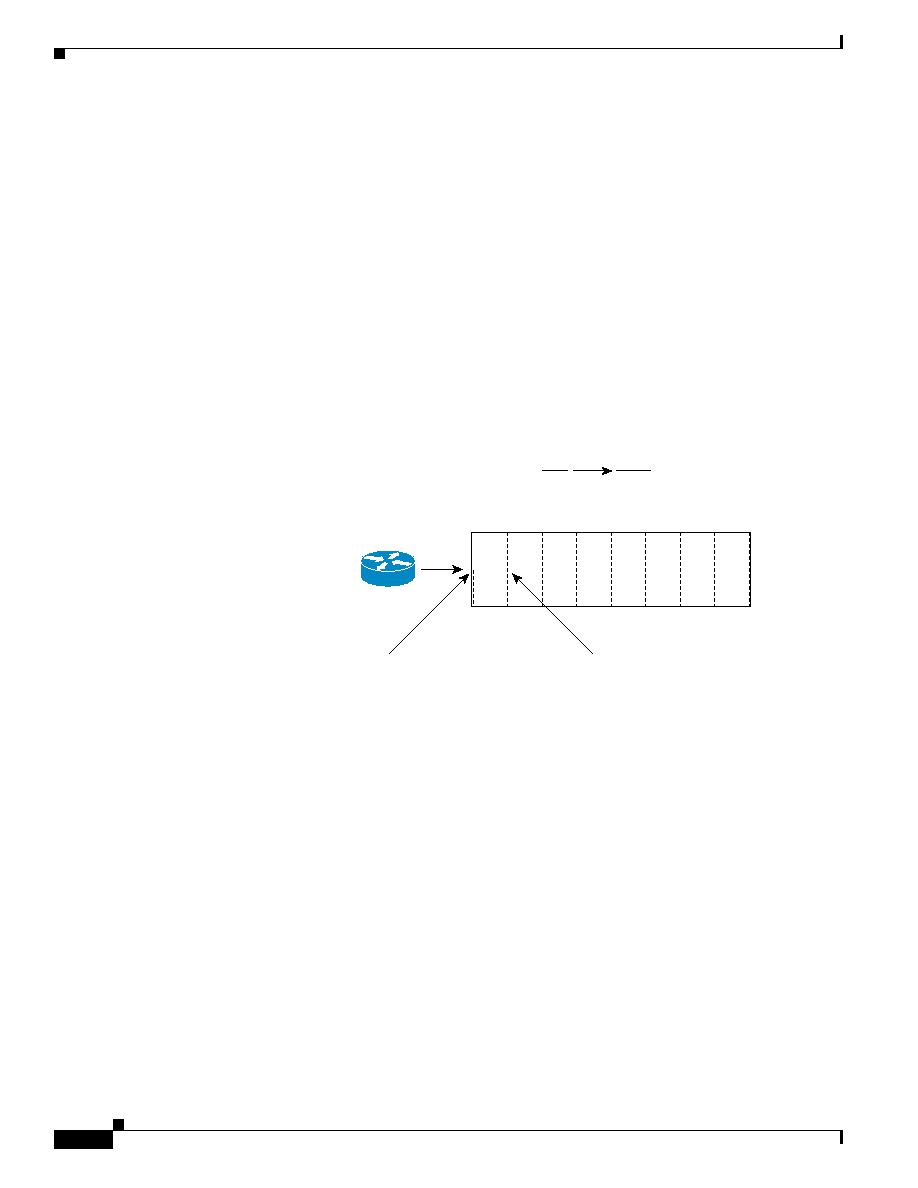
4-12
Cisco AVVID Network Infrastructure Enterprise Quality of Service Design
956467
Chapter 4 QoS in an AVVID-Enabled Wide-Area Network
QoS Recommendations for WAN Aggregation Routers
Committed Burst Rate
Recommendation:
Bc set to CIR/100.
With Frame Relay networks, you also need to consider the amount of data a node can transmit at any
given time. A 56 kbps PVC can transmit a maximum of 56 kbps of traffic in 1 second. How this second
is divided is called the interval (Tc). The amount of traffic a node can transmit during this interval is
called the Committed Burst (Bc) rate.
By default, Cisco IOS sets the Bc to CIR/8. The formula for calculating the Tc is:
Tc = Bc / CIR
For example, with a CIR of 56 kbps:
Tc = 7000 / 56000 or 125 ms
This example is illustrated in
.
Figure 4-3
FRTS Delay with Default Bc (CIR/8)
In this example, after a router sends its allocated 7000 bits, it must wait 120.5 ms before sending the next
batch of traffic.While this is a good default value for data, it is a very bad choice for voice. By setting
the Bc value to a much lower number, you can decrease the interval, which means the router will send
traffic more frequently.
The optimal configured value for Bc is CIR/100, which results in a 10 ms interval (Tc=Bc/CIR).
Excess Burst Rate
Recommendation:
Be set to 0.
If the router does not have enough traffic to send all of its Bc (1000 bits, for example), it can "credit" its
account and send more traffic during a later interval. The maximum amount that can be credited to the
router's traffic account is called the excess burst (Be) rate. The problem with the Be in Cisco AVVID
networks is that this can create a potential for buffering delays within a Frame Relay network (because
the receiving side can "pull" the traffic from a circuit only at the rate of Bc, not Bc + Be). Therefore, to
remove this potential for buffering delays, it is recommended that you set Be to 0.
Tc =
= 125ms
IMPORTANT!
By default,
Bc is set
to CIR/8
Bc
0
CIR
81033
7000
56000
7
14
21
28
35
42
49
56
0 ms 125 250 375 500 625 750 875 1000
When 7000 bits (Bc) of transmitted credits are exhausted then no more packets can be sent in
that interval. The transmitting router must wait until the next interval to send another burst of
7000 bits. For a T1 line rate, this cycle will translate to 4.5 ms of transmission, followed by 120.5 ms
of silence. This cycle is repeated eight times in one second, by default. VoIP latency/jitter
requirements cannot tolerate the interpacket delay introduced by the FRTS default Bc.
